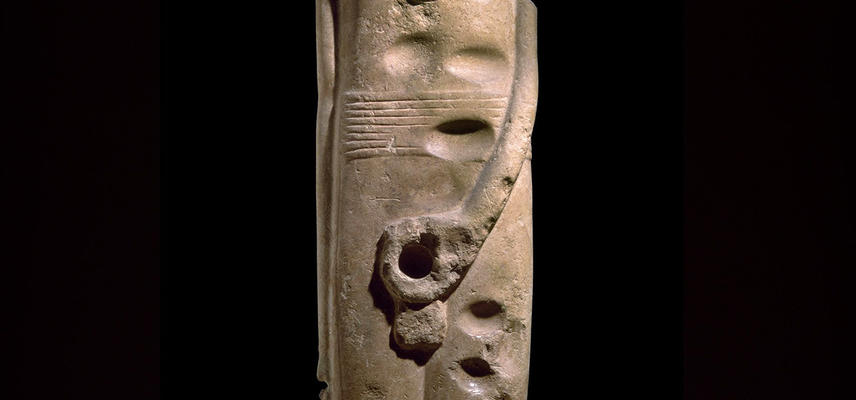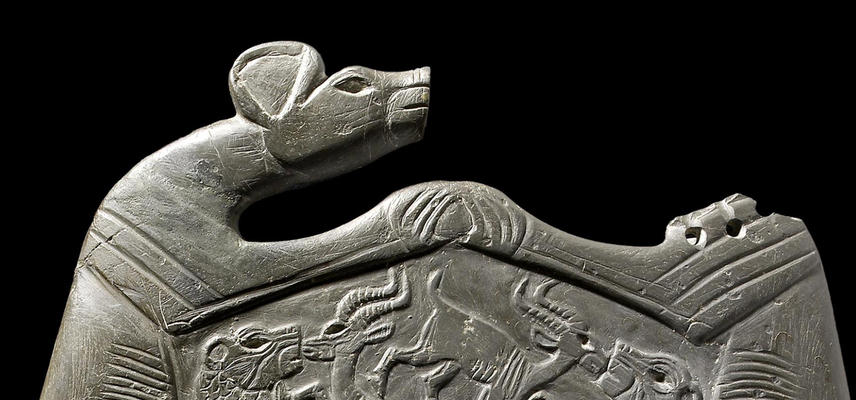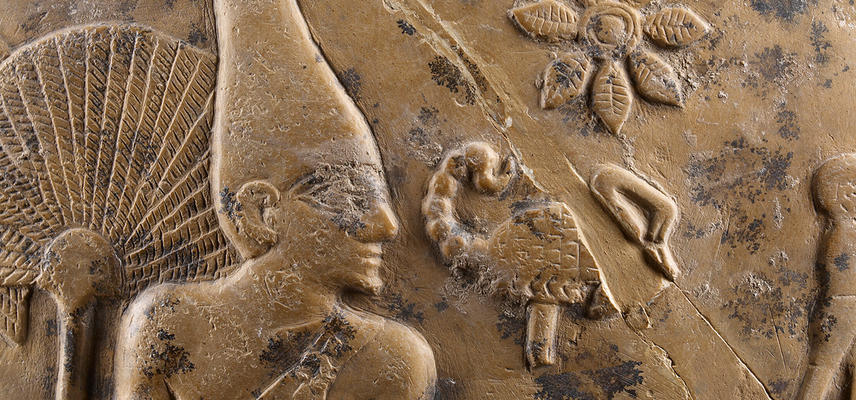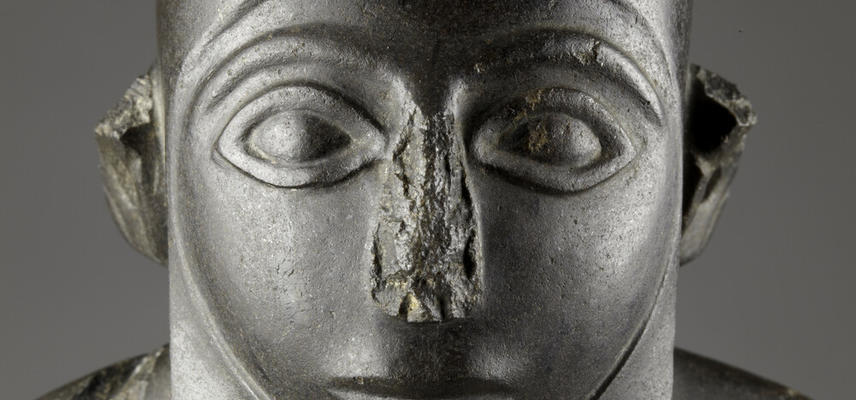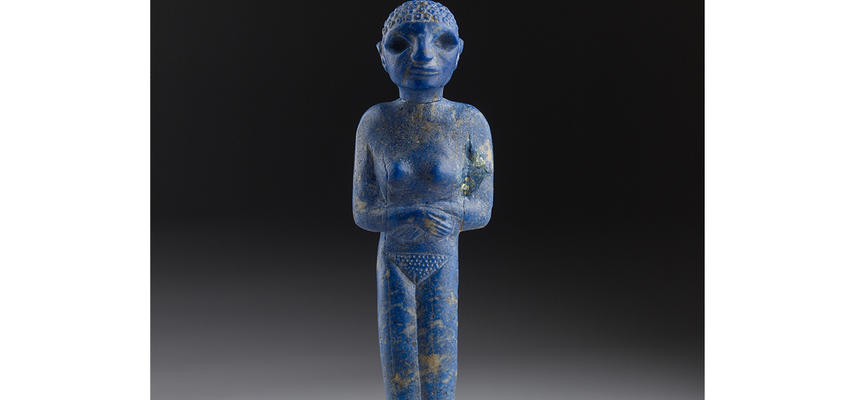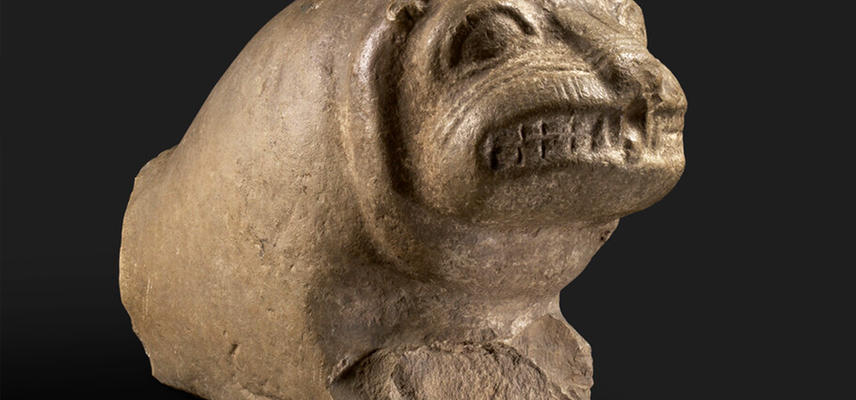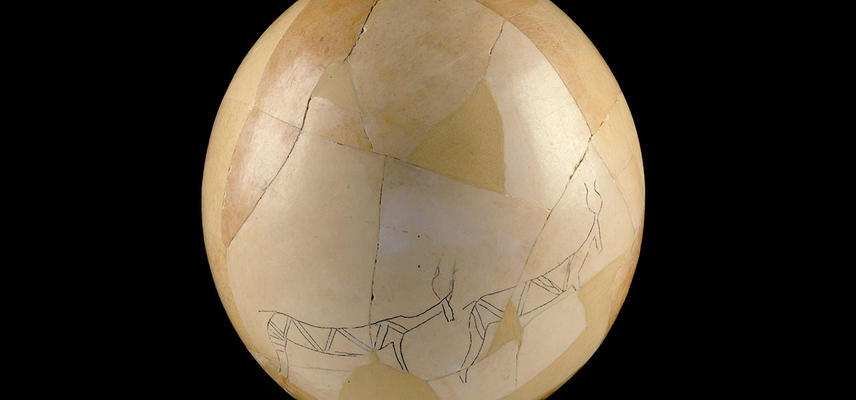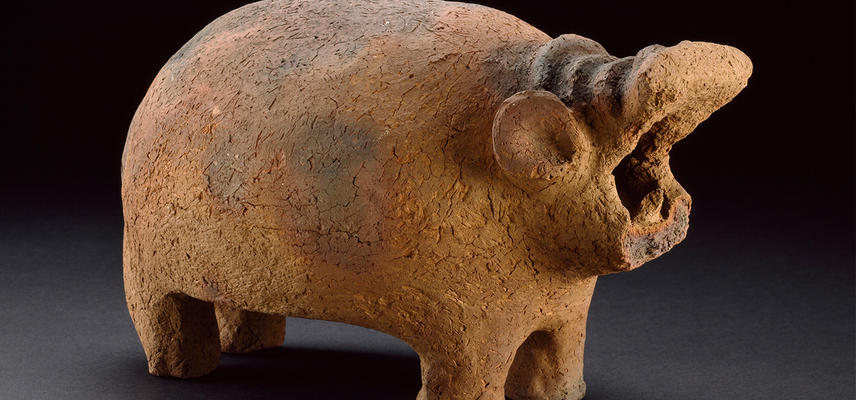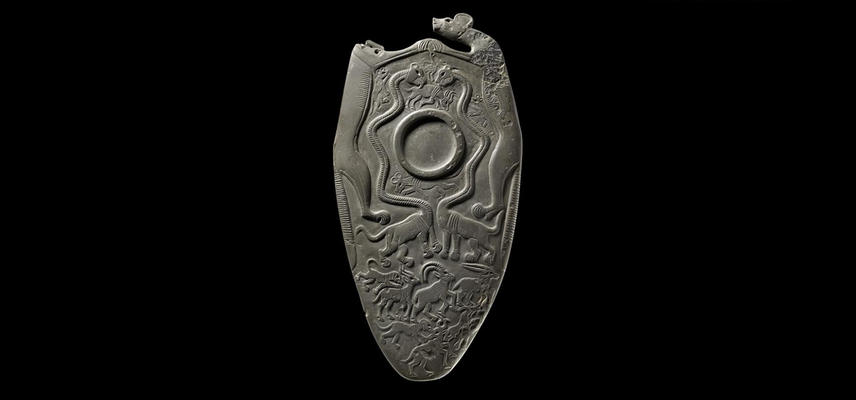EGYPT AT ITS ORIGINS GALLERY
The first of the Ashmolean's six Ancient Egypt and Sudan galleries which take you on a tour through 1000s of years of human occupation of the Nile Valley
This gallery explores the origins of ancient Egyptian civilization from the Palaeolithic period (c. 1,000,000–10,000 BCE), through the Predynastic period (c. 5500–3100 BCE), to the unification of the country under a single king at the start of the Early Dynastic period (c. 3100 BCE). The development of towns, religious beliefs and the idea of kingship were all central to the growth of Egyptian culture at this time.
In the centre of the gallery are, usually, two colossal limestone statues of the fertility god Min (dated c. 3300 BCE), from the temple of Min at Koptos. They are among the oldest preserved stone sculptures in the world and mark the beginning of a long tradition in Ancient Egypt of building on a monumental scale. But please note, currently one of the Min statutes has been removed as its on temporary loan and will return to the gallery in early 2026.
Many items in the gallery are from Hierakonpolis, the ‘City of the Falcon’, one of the largest Predynastic towns to be excavated in Egypt. These include the ceremonial ‘Two Dog’ palette – a double-sided cosmetic palette derived from the type used for grinding eye paint during the Predynastic period.
A central display case contains the Narmer and Scorpion mace-heads. Maces were used as weapons in this period but these intricately carved objects were purely ceremonial.
Around the walls are displays of ceramics, utensils and jewellery, many of which would have been deposited in tombs.
Near the entrance are two striking, smaller figurines. 'Macgregor Man', is a basalt statuette dating to about 3100 BCE, whose authenticity has been questioned by some who say he's a masterful modern forgery. The blue, lapis-lazuli 'Figure of woman' is an unparalleled example of late Predynastic art.



